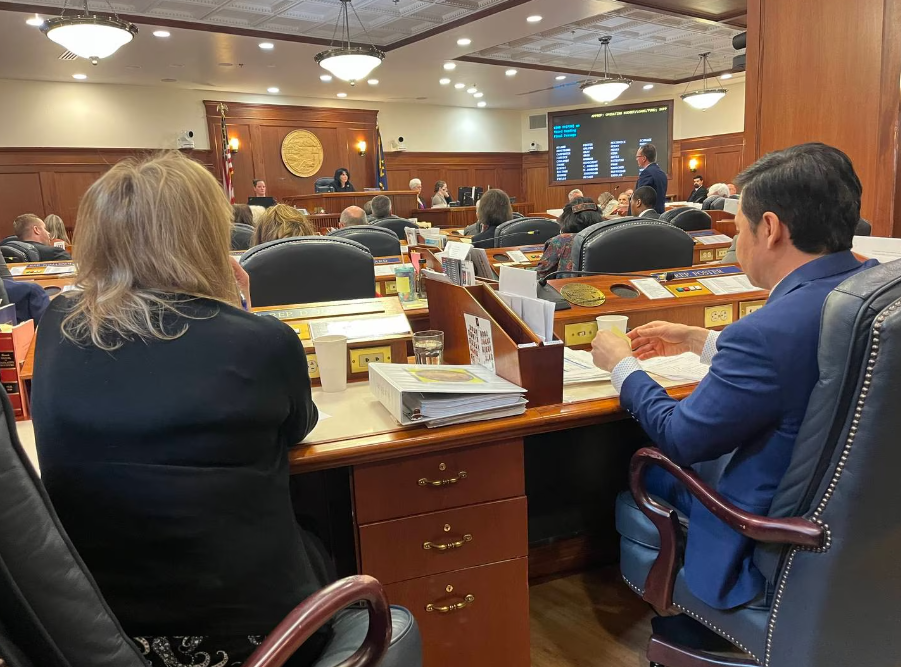April 17
By Sean Maguire
The Alaska House of Representatives advanced its version of the operating budget Monday, which is projected to create a $600-million deficit by paying a $2,700 Permanent Fund dividend. But a first supermajority vote failed to spend from savings to fill the deficit and to make a one-time $175 million boost to public schools.
Budget negotiations will continue in the final month of the legislative session with the Senate, which has indicated support for a spending plan that does not require drawing from savings, a $1,300 dividend and a more substantial, permanent increase to the Base Student Allocation, the state’s per-student funding formula. Members of the Republican-led House majority justified the planned $600-million draw from savings as one step in budget negotiations with the Senate, and as a way to incentivize resolving the state’s long-term structural deficit.
The House passed the operating budget Monday on a 23-17 vote along caucus lines. All members of the Republican led-majority caucus voted in support of the budget, and all members of the Democrat-dominated minority voted against advancing the spending plan. Wasilla Republican Rep. David Eastman, who doesn’t sit with either caucus, also voted no.
Three-quarters of House members were required to approve drawing from savings to bridge the state’s fiscal gap, and to pay for a temporary funding boost for education. The supermajority vote also failed along caucus lines with the minority caucus and Eastman voting against the plan. But there could a second chance for the three-quarters vote after final budget negotiations are completed.
The Republican-led majority crafted a largely flat budget, which was similar to Republican Gov. Mike Dunleavy’s proposed spending plan, and the Senate’s draft budget. But there were a few key differences.
The House’s budget had a smaller Permanent Fund dividend than the governor, which would follow the so-called “50-50″ model and pay $2,700 per eligible Alaskan at a cost of $1.7 billion. Dunleavy proposed paying a $3,400 full statutory dividend at a cost of roughly $2.2 billion. The governor’s budget did not include a temporary boost for education.
Palmer Republican DeLena Johnson, who manages the operating budget in the House, said the budget struck “a delicate balance” between the state’s fiscal reality, and the essential services Alaskans rely on. She called the House’s dividend “robust,” and pitched it as a compromise for supporters of a full PFD.
Johnson said there would be “very slight increases” to the budget to pay for additional law enforcement officers and housing for Alaska State Troopers. There would be $4.5 million appropriated for the state of Alaska to take over management from the federal government of permitting wetlands for development, which the Senate blocked in 2022.
The $175 million one-time school funding boost would be historic, Johnson said, and that it was unlikely a permanent school funding increase would pass the Legislature this year. But minority members said that stability in school funding was essential, and that the temporary $680 boost to the BSA would be far short of what was requested by education advocates, who said the system was in crisis after years of flat funding.
Members of the Democrat-dominated minority conceded that the budget spent in a lot of worthwhile areas, but objected to spending from savings to fill a projected deficit. Most members of the minority walked out of budget debates earlier in the month when the source of funding for the school-funding boost was changed by the majority from the state treasury to savings.

